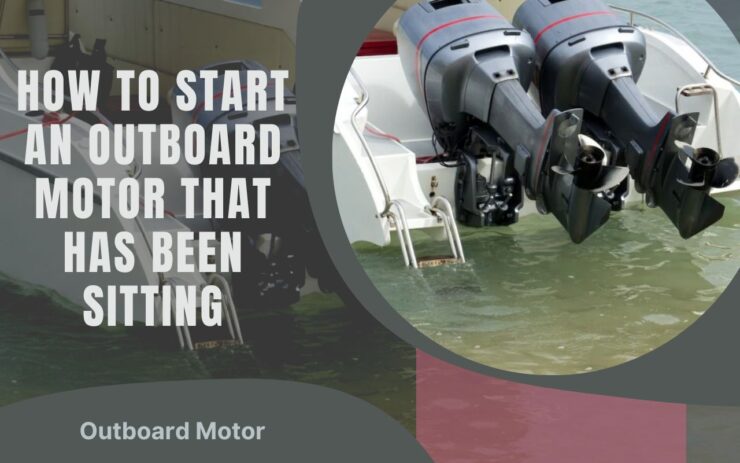Thinking about going on a boat ride this summer? Then fixing your outboard motor must be a big concern. You can either get professional help or save a hefty penny by doing it yourself.
You don’t have to be an expert and neither do you need intricate skills. To make things even easier, we’ve made a simple guide for you.
So, how to start an outboard motor that has been sitting?
You can start an outboard motor using 8 easy steps. Start by removing the spark plugs and oiling the cylinders.
Check the gear oil and cut the boat’s fuel line. Check the fuel condition and connect a shop tank. Then drain the engine’s fuel and check the oil level. Finally, charge the battery and run it!
This information might seem too little to get your job done. We’ve included all of the pertinent information below. So, jump right in for more!
Table of Contents
ToggleHow Long Can A Boat With An Outboard Motor Be Left Out?
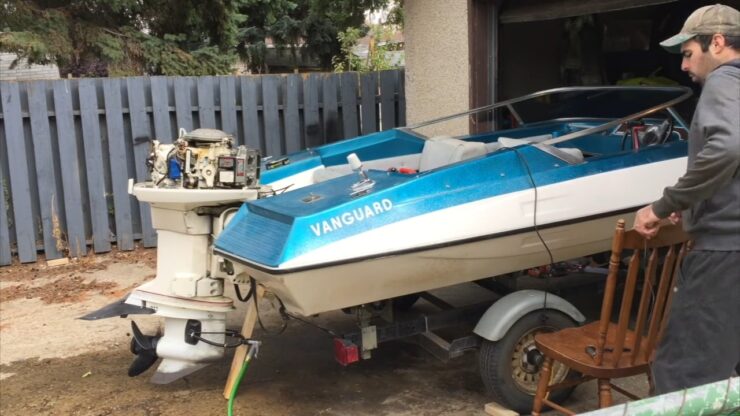
This question has no definitive answer. How long the boat can be left out is completely circumstantial.
Boats that are left out in open weather are more prone to damage. Without any kind of maintenance or servicing, they might not last long. So, maintaining your boat is essential.
If it’s left out in winter, check that there is no water in the lower unit. Water in the lower unit can freeze, causing it to crack. The northern winter will not spare your boat.
Keeping your boat in the south could also result in similar circumstances. The southern weather could rust and corrode your engine.
If properly maintained and serviced to adapt to different weathers, it’ll presumably last much longer. But we advise you to store your boat properly and service it every 6-8 months.
8 Simple Steps to Start Your Outboard Motor in A Jiffy
Having an outboard that’s not starting can be quite saddening. But we want you to have the most enjoyable summer possible. So we’ve curated an 8 steps motor repairing process for you.
Necessary Equipment
Fetch these handy tools beforehand to save time-
- New spark plugs
- Drain plugs
- Battery charger
- Fogging oil
- Gear oil
- Shop fuel tank
- Vent and drain plugs
- Hosepipe
Step-1: Remove The Spark Plugs
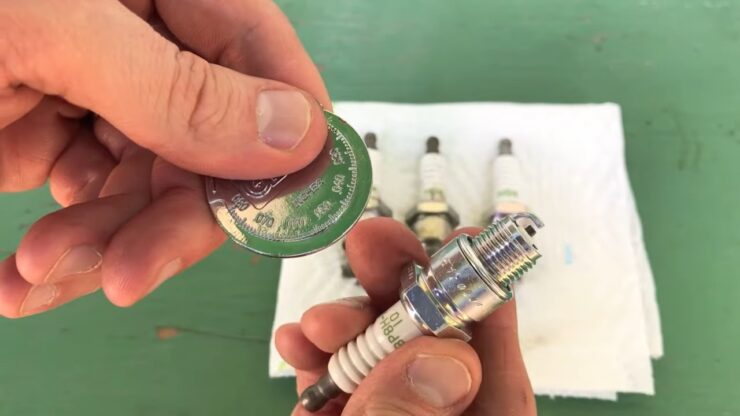
First, remove the spark plugs. Check the spark plugs for any kind of water damage like rust or corrosion.
Replace the spark plugs with new ones if needed. This will deter problems like the motor cranking but not starting later on.
Step-2: Oil The Spark Plug Cylinder
After removing the spark plugs, grab your fogging oil and spritz some into the cylinders. Turn the engine over with your hands to get the oil into the pistons and rings.
This will ensure that your engine isn’t running on dry cylinders. Running on dry cylinders could score your cylinder walls or piston rings.
Step-3: Check The Gear Oil
Gear oil is usually found in the lower unit near the drain plug. Remove the drain plug and if there’s any water, it’ll get flushed out.
Once the water is out, check if the lower unit shifts gears. Put some new gear oil back in the case. Replace the vent and drain plugs if needed.
Step-4: Cut The Boat’s Fuel Line
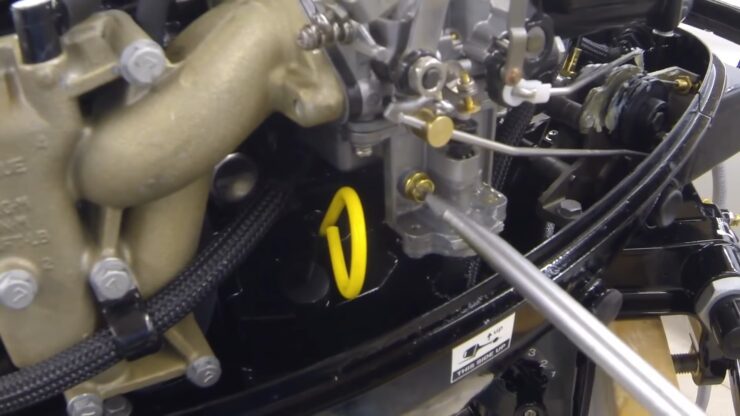
Lift your boat’s bow up and cut the boat’s fuel line. If there’s any dirt or residue in the tank, it’ll get shifted to the back. This will make it easier to pull the gunk out of the pickup tube.
While you’re at it, check your keel too. If it needs repairing, fix it and seal with KeelGuard or KeelShield for durability.
Step-5: Connect A Shop Tank
If the fuel in your tank has gone bad, then connect to a shop fuel tank. Connect it to the fuel line going into the engine using a primer bulb.
This will help you prime the fuel system and get rid of bad fuel by squirting in good fuel.
Step-6: Drain The Engine Fuel
If you have a Carbureted engine, unscrew the drain screw until a little fuel drips out. Squeeze the primer bulb till the old fuel gushes out the screws.
If you have a fuel-injected engine, find the VST and drain screw. Then repeat the same process as the Carbureted engine.
Step-7: Check The Oil Level And Condition
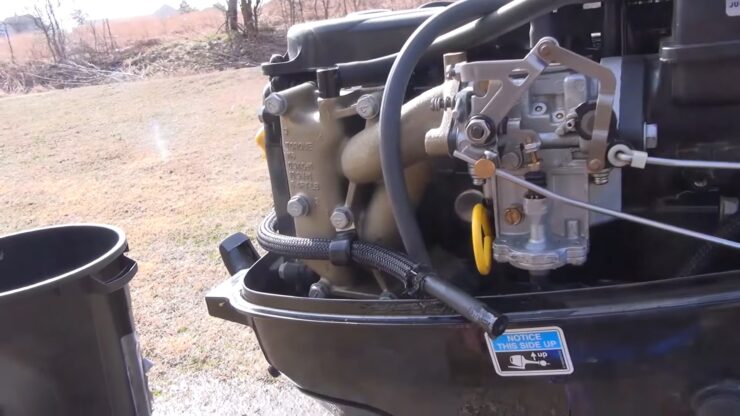
On a 4-stroke engine, remove the dirty oil and fill it up to the required level. And on 2-stroke engines, confirm that their oil injection systems are full.
Step-8: Check The Battery’s Power And Run The Engine
Check if your batteries are fine and plug them to the charger. Then just leave them to charge at 2-10 Amps. If you have one day, put it on 10 Amps. If there’s more than one day, go with 2 Amps.
Once you’re done charging, get some water via a hose. Allow it to run for a few minutes and then prime up the fuel. Now turn your key and run your engine!
Lastly, check your steering wheel and lube your steering cable if needed. Because the steering cables can go bad over time.
Hope you’ll be able to overcome this challenge and enjoy your summer outing like everyone else!
FAQs
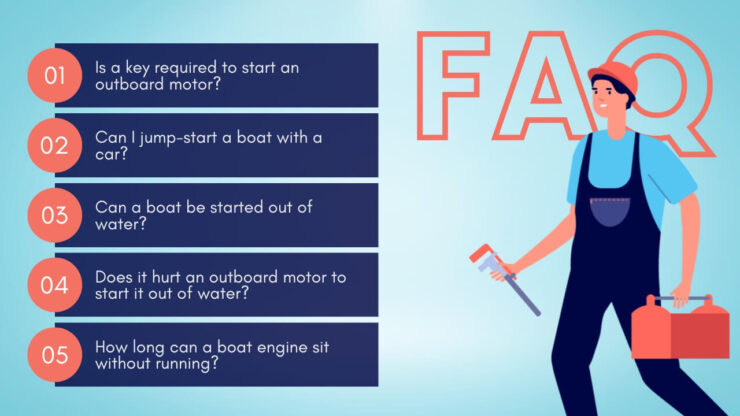
Is a key required to start an outboard motor?
Not all outboard motors require a key. Some motors are required to be pull-started while some need a key. It is dependent on what kind of engine you have.
Can I jump-start a boat with a car?
Yes, you can. To jump-start your engine you can use a car battery. Using another boat to jump-start is also recommended.
Can a boat be started out of water?
You can start a boat without water but we don’t advise you to do so. The absence of water can cause the impellers to heat up and possibly be damaged.
Does it hurt an outboard motor to start it out of water?
Yes, starting an outboard motor out of water can be harmful to the engine.
An outboard motor is designed to be run in water, which helps cool the engine and lubricate the moving parts.
When started out of water, the engine overheats, causing damage to internal components, and can also cause damage to the powerhead, gear case, and water pump.
Additionally, the water pump may not work correctly and can cause damage to the engine.
It is recommended to start and run an outboard motor only in water.
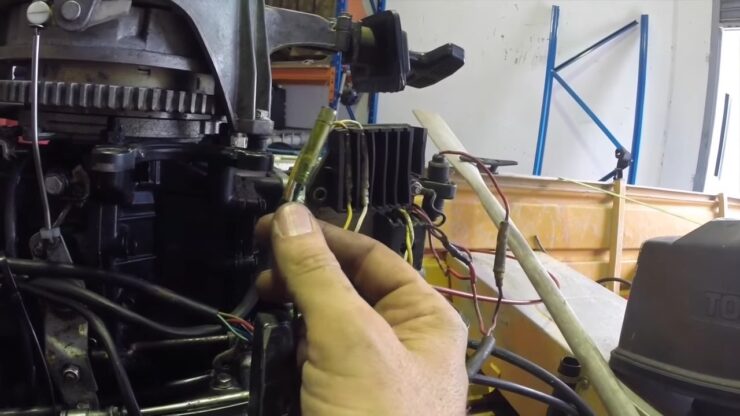
How long can a boat engine sit without running?
The amount of time a boat engine can sit without running depends on several factors, including the type of engine, the climate, and how well it is maintained.
As a general rule, a boat engine can sit for about 3-6 months without running before the battery may die or the fuel system may become clogged with stale fuel.
However, it is recommended to run the engine periodically, even if it is just for a few minutes, to circulate oil, recharge the battery, and prevent the fuel from becoming stale.
If a boat engine is going to sit for an extended period of time, it is recommended to take steps to prepare it for storage, such as stabilizing the fuel, removing the battery, and adding a fuel stabilizer to prevent corrosion and clogging.
Conclusion
We’re sure you now know how to start an outboard motor that has been sitting. Follow our steps attentively to attain the best outcome.
Contact a professional if your outboard motor has further problems.
I’m Liam Jackson, the proud owner and driving force behind KayakPaddling.net. Born somewhere in the expansive beauty of the United States, I’ve nurtured a lifelong passion for kayaking and fishing that has led me to explore the far corners of our nation’s waterways.
Related Posts:
- 16 Best Kayak For Beginners 2024 - Kayaking Adventure Gear
- Heavy Duty Fishing: 11 Best Rods And Reels For Big Fish 2024
- 12 Best Beach Wagons & Carts 2024 - For All-Terrain
- 10 Best Fish Finders Under $200 2024 - Top Affordable Picks
- 10 Best Marine Spark Plugs for Your Boat 2024 -…
- How to Stay Safe on Slow Moving Waters When Paddle Boarding?

